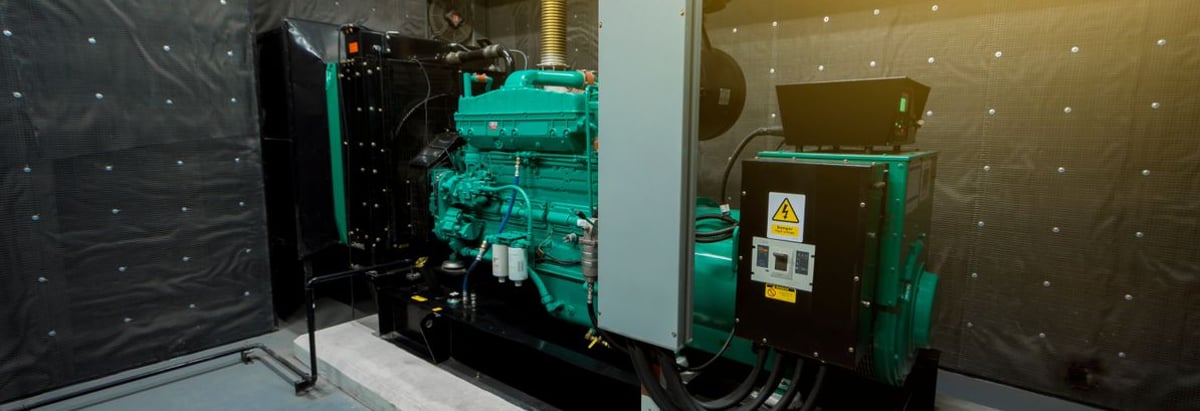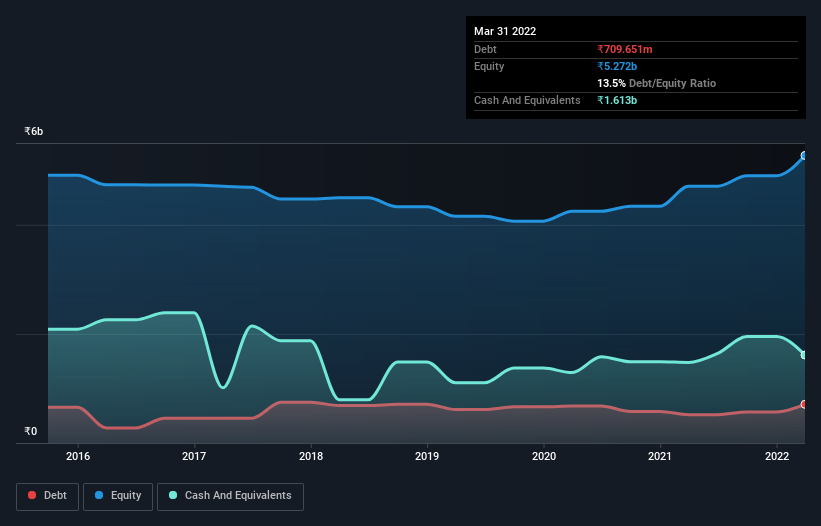- India
- /
- Electrical
- /
- NSEI:TDPOWERSYS
We Think TD Power Systems (NSE:TDPOWERSYS) Can Stay On Top Of Its Debt

The external fund manager backed by Berkshire Hathaway's Charlie Munger, Li Lu, makes no bones about it when he says 'The biggest investment risk is not the volatility of prices, but whether you will suffer a permanent loss of capital.' It's only natural to consider a company's balance sheet when you examine how risky it is, since debt is often involved when a business collapses. We can see that TD Power Systems Limited (NSE:TDPOWERSYS) does use debt in its business. But should shareholders be worried about its use of debt?
When Is Debt Dangerous?
Generally speaking, debt only becomes a real problem when a company can't easily pay it off, either by raising capital or with its own cash flow. If things get really bad, the lenders can take control of the business. However, a more common (but still painful) scenario is that it has to raise new equity capital at a low price, thus permanently diluting shareholders. Having said that, the most common situation is where a company manages its debt reasonably well - and to its own advantage. The first thing to do when considering how much debt a business uses is to look at its cash and debt together.
See our latest analysis for TD Power Systems
What Is TD Power Systems's Net Debt?
As you can see below, at the end of March 2022, TD Power Systems had ₹709.7m of debt, up from ₹520.0m a year ago. Click the image for more detail. But on the other hand it also has ₹1.61b in cash, leading to a ₹903.8m net cash position.

How Healthy Is TD Power Systems' Balance Sheet?
According to the last reported balance sheet, TD Power Systems had liabilities of ₹3.67b due within 12 months, and liabilities of ₹129.2m due beyond 12 months. Offsetting this, it had ₹1.61b in cash and ₹2.41b in receivables that were due within 12 months. So it actually has ₹229.0m more liquid assets than total liabilities.
This state of affairs indicates that TD Power Systems' balance sheet looks quite solid, as its total liabilities are just about equal to its liquid assets. So while it's hard to imagine that the ₹16.1b company is struggling for cash, we still think it's worth monitoring its balance sheet. Succinctly put, TD Power Systems boasts net cash, so it's fair to say it does not have a heavy debt load!
On top of that, TD Power Systems grew its EBIT by 51% over the last twelve months, and that growth will make it easier to handle its debt. The balance sheet is clearly the area to focus on when you are analysing debt. But you can't view debt in total isolation; since TD Power Systems will need earnings to service that debt. So if you're keen to discover more about its earnings, it might be worth checking out this graph of its long term earnings trend.
Finally, a business needs free cash flow to pay off debt; accounting profits just don't cut it. TD Power Systems may have net cash on the balance sheet, but it is still interesting to look at how well the business converts its earnings before interest and tax (EBIT) to free cash flow, because that will influence both its need for, and its capacity to manage debt. In the last three years, TD Power Systems created free cash flow amounting to 16% of its EBIT, an uninspiring performance. For us, cash conversion that low sparks a little paranoia about is ability to extinguish debt.
Summing up
While it is always sensible to investigate a company's debt, in this case TD Power Systems has ₹903.8m in net cash and a decent-looking balance sheet. And it impressed us with its EBIT growth of 51% over the last year. So we don't think TD Power Systems's use of debt is risky. The balance sheet is clearly the area to focus on when you are analysing debt. However, not all investment risk resides within the balance sheet - far from it. These risks can be hard to spot. Every company has them, and we've spotted 2 warning signs for TD Power Systems you should know about.
At the end of the day, it's often better to focus on companies that are free from net debt. You can access our special list of such companies (all with a track record of profit growth). It's free.
Valuation is complex, but we're here to simplify it.
Discover if TD Power Systems might be undervalued or overvalued with our detailed analysis, featuring fair value estimates, potential risks, dividends, insider trades, and its financial condition.
Access Free AnalysisHave feedback on this article? Concerned about the content? Get in touch with us directly. Alternatively, email editorial-team (at) simplywallst.com.
This article by Simply Wall St is general in nature. We provide commentary based on historical data and analyst forecasts only using an unbiased methodology and our articles are not intended to be financial advice. It does not constitute a recommendation to buy or sell any stock, and does not take account of your objectives, or your financial situation. We aim to bring you long-term focused analysis driven by fundamental data. Note that our analysis may not factor in the latest price-sensitive company announcements or qualitative material. Simply Wall St has no position in any stocks mentioned.
About NSEI:TDPOWERSYS
TD Power Systems
Manufactures and sells AC generators and electric motors in India, Japan, the United States, Europe, and Turkey.
Flawless balance sheet average dividend payer.
Market Insights
Community Narratives




